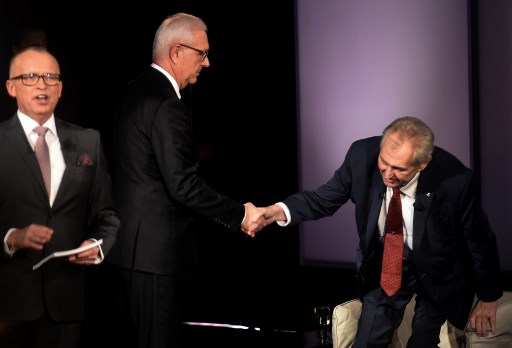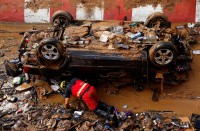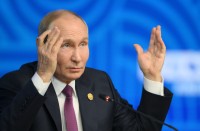
PRAGUE, Czech Republic (AFP) – The Czech Republic emerged from four decades behind the Iron Curtain to become a member of the European Union and one of Europe’s tourist hotspots.
Here are five things to know about the central European country of 10.6 million people that kicks off a second-round presidential election run-off on Friday.
Prague, an architectural gem
Its capital is a popular tourist magnet, boasting a picturesque historic center that entered the UNESCO heritage list in 1992.
Under the dominating Prague Castle, the old town — which is split by the Vltava river — is rich in architectural jewels, Renaissance and Baroque palaces, Gothic cathedrals and art deco buildings that illustrate its 1,000-year history.
Every year millions of tourists cross the Vltava on Charles Bridge, the city’s most popular medieval site. The bridge’s foundation stone was laid on July 9, 1357 by Czech King and Holy Roman Emperor Charles IV.
The ‘Czech Trump’
Pro-Russian, pro-Chinese and anti-immigration President Milos Zeman is targeting a second five-year term.
Billionaire Prime Minister Andrej Babis who is dubbed the “Czech Trump,” has failed to form a coalition after his populist ANO movement won a general election in October.
The Babis minority cabinet of ANO members and non-partisan experts lost a confidence vote on January 16 and Babis handed his resignation to Zeman on January 24, but the president immediately asked him to form a new cabinet.
Car-driven economy
With its flagship Skoda, the Czech economy is heavily dependent on car production and exports to the eurozone.
It recovered in 2014, after a long crisis, and in 2017 the Czech National Bank forecast growth of 4.5 percent — up from 2.6 percent in 2016 — with 3.4 percent expected for 2018.
Unemployment fell to 4.3 percent in 2017, the lowest level since 2008.
Nazi, Soviet occupation
The republic has its roots in Czechoslovakia, which declared independence from the dying Austro-Hungarian Empire in 1918, and comprised Czech and Slovak people.
From 1938 Nazi Germany annexed various parts of the country but Czechoslovakia regained its autonomy in 1945.
Three years later a Communist coup brought the country under the yoke of the Soviet Union.
Moscow crushed a 1968 attempt at liberal reform, the “Prague Spring”. In 1989 the Velvet Revolution ended four decades of Soviet domination, propelling dissident playwright Vaclav Havel to the presidency.
In 1993 Czechoslovakia split into two states, the Czech Republic and Slovakia, and Havel became the first Czech president.
Firmly European
The Czech Republic has turned its back on its Soviet past, joining the NATO transatlantic military alliance in 1999 and the European Union in 2004.
It is also a part of Europe’s Schengen border-free area but has resisted adopting the euro, favoring its own koruna currency.







